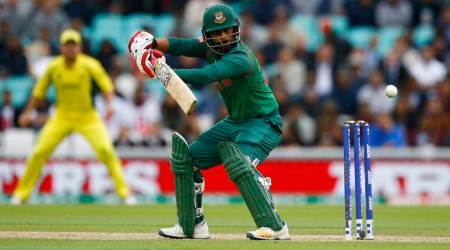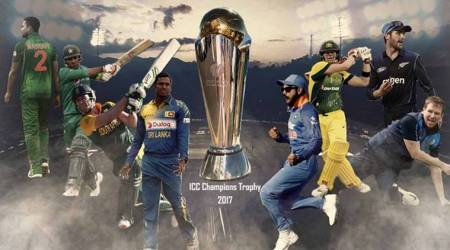 Team India attend a training session at the Oval in London on Wednesday. India face Sri Lanka in a Group B match here on Thursday. AP
Team India attend a training session at the Oval in London on Wednesday. India face Sri Lanka in a Group B match here on Thursday. AP
“Lord’s is almost a mythical place. The Oval in comparison is a people’s stadium.” Mark Butcher couldn’t have put it better. He should know. The former England batsman after all literally grew up at the Oval. As a youngster, he saw his father Alan don the “three feathers” emblem and captain Surrey for a number of years. Then the junior Butcher continued the legacy for nearly two more decades.
Lord’s is, of course, what everyone thinks of when you say cricket ground in London. And for many the Oval has been the other ground. It didn’t help that the English were often made to feel out of place here during the 1980s, where it was more the West Indians’ home away from home. The proximity of the stadium to Brixton, which is engulfed with Caribbean life, culture and food, meant that they thronged to Kennington whenever Clive Lloyd and his band of boys were here for a game. And they cheered raucously as their compatriots made the English look silly for more than a decade.
Both Lord’s and the Oval do have their own share of history. But you have to dig out the history of the Oval. Almost everything is known about Lord’s. It’s not the Home of Cricket for nothing.
But funnily enough there’ve been more cricketing highlights of historic value played out here than at that other more illustrious venue in the northwest of the city.
“While Lord’s has always gotten two Tests during most summers, and everyone’s obsessed over getting their name up on the honours’ board, the Oval which would play host to the final Test is where careers were made and broken,” says Butcher.
The Oval went from a piece of land where Henry VIII used to grow asparagus to hosting the first-ever Test on English soil. It was converted to a potential prisoner-of-war camp during World War II and fortunately never used. Post-war it was here that Don Bradman failed to score those final four runs and fell to Eric Hollies off the first-ball in his final essay.
And in later years, England have won and lost a number of Ashes-including famously in 2005.
“And there’s also Devon Malcolm’s 9/59 that will never be forgotten,” adds Butcher. You just have to walk around the ground, from the Hobbs Gate to the Alec Stewart Gate, to know the history that resides here. Everyone from Peter May to Laker and Lock to Ken Barrington have a plaque named after them with even the more modern Surrey legends like the Hollioakes and the Butchers having a gate named after them.
But more than anything, it’s the vibe at the two grounds that create the major difference. Lord’s can be a tad stuffy with its coats, suits and ties-and we’re not even talking about those gaudy MCC ones. There are rules and restrictions over what you can bring in and dress-codes at many areas.
Casual and boisterous
The Oval is a lot more casual. You can walk in from most gates, and the atmosphere is often boisterous, or allowed to be so.
David Lloyd had once written that if Lord’s is Arsenal, the Oval is West Ham, in terms of this being a more homely venue. What adds to the homeliness is the many residential buildings that surround the ground, providing perfect vantage points for catching the action on the ground.
“Even from its name, it’s the Oval. It could be anywhere. But everyone knows where Lord’s is and what it stands for,” says Butcher.
Historically, the final of any major world event in England was always held at Lord’s, and understandably so. It’s a tradition that has changed of late. The Champions Trophy will be held at the Oval this time. And according to Butcher it makes sense too. With fans expected to come in from various parts of the country and the world, the convenience in getting to the Oval gives it the edge.
“You can approach it from so many ways. On the tube, you can either get here using the Victoria Line, getting off at Vauxhall, or take the Northern line and get off at the Oval tube station,” he explains. What’s more, the atmosphere here also demands for everyone, including the English locals to let their hair down a little more. Lord’s can keep the stiff upper lips.
Butcher though admits sheepishly that he still treasured playing Test cricket at Lord’s more, like most cricketers would, but insists that the Oval will always be home.
“I could walk in and out of every door here from the time I was a toddler. And there’s no other county or ground I ever wanted to call home,” he says. And for good reason too.

